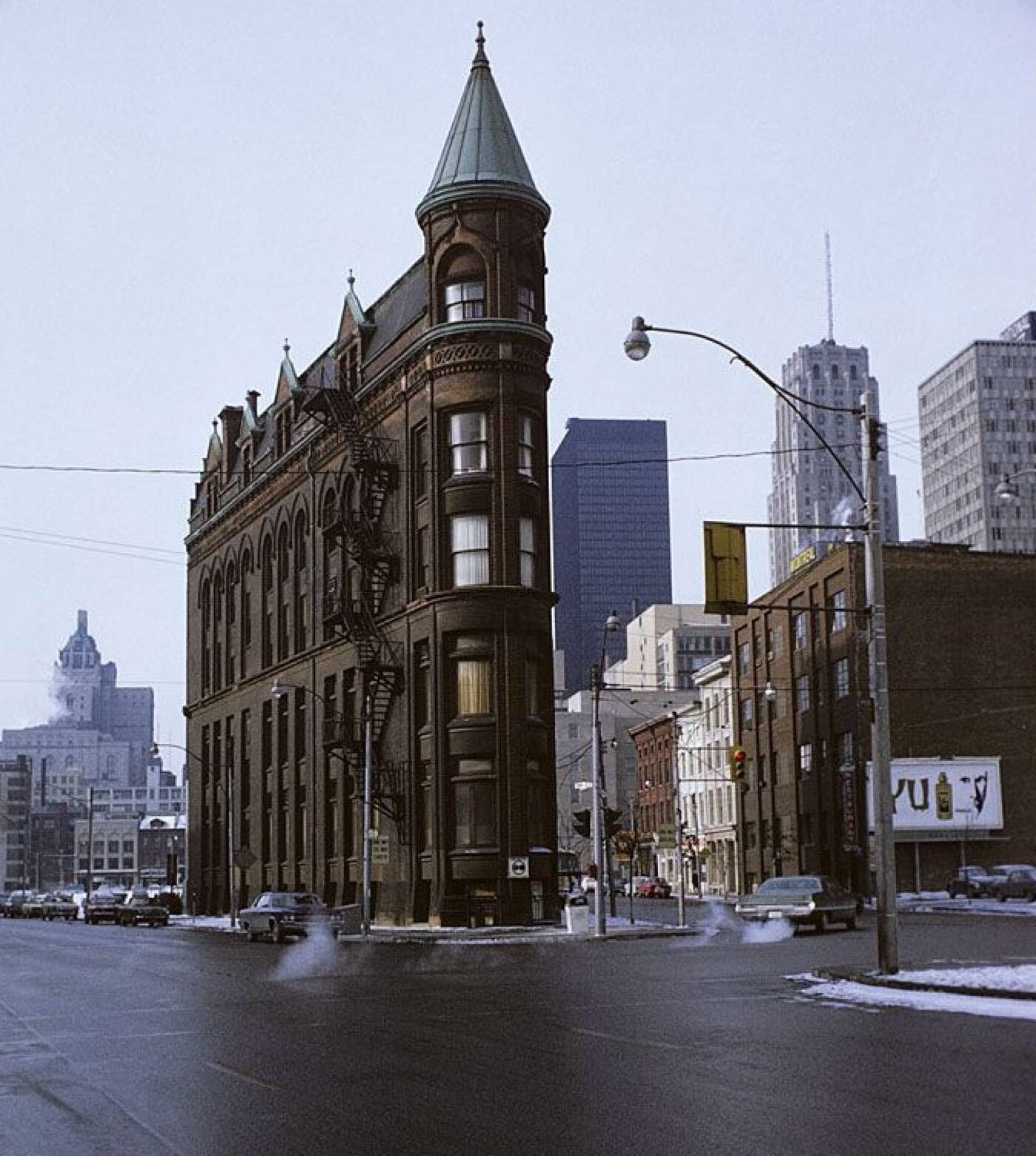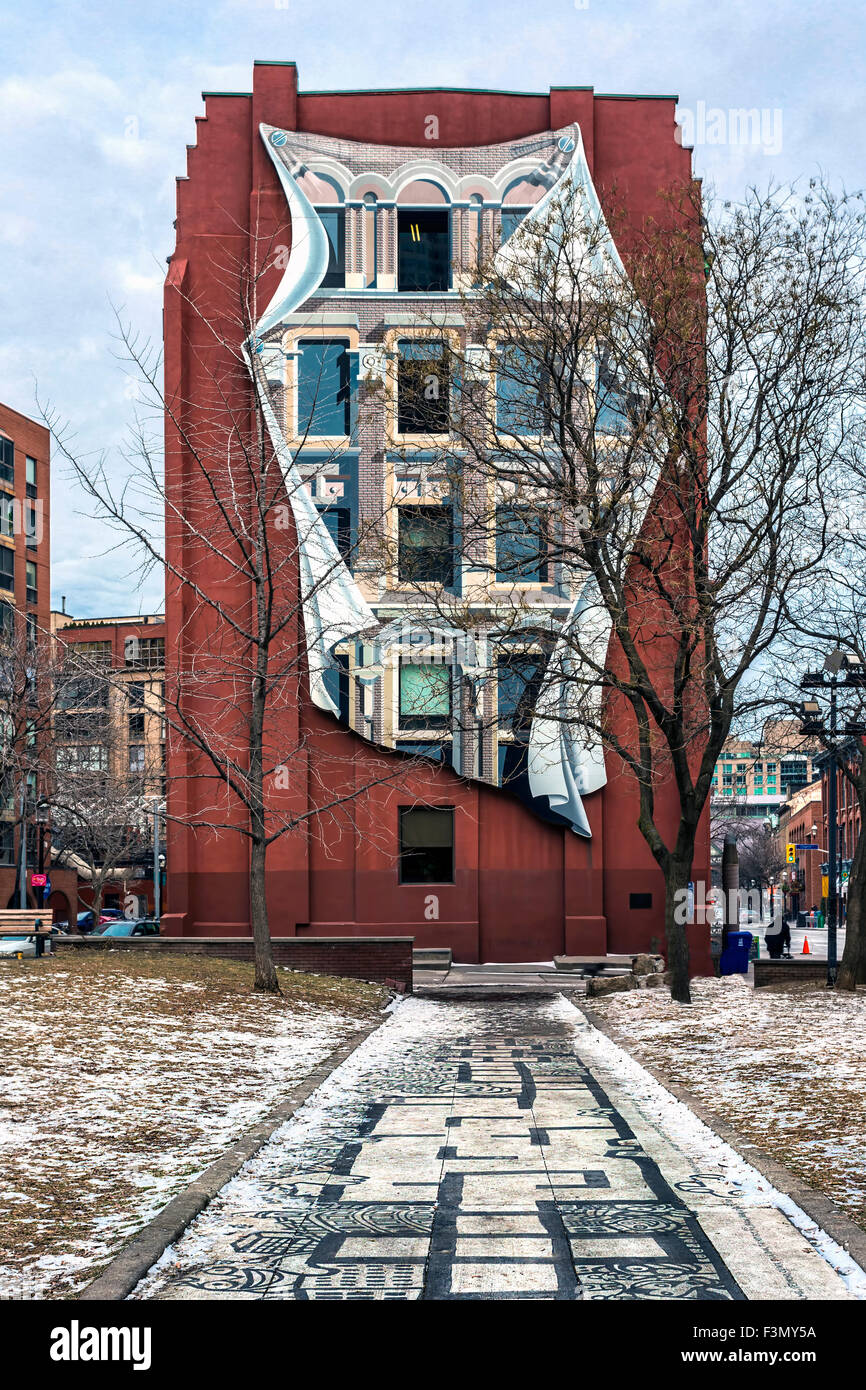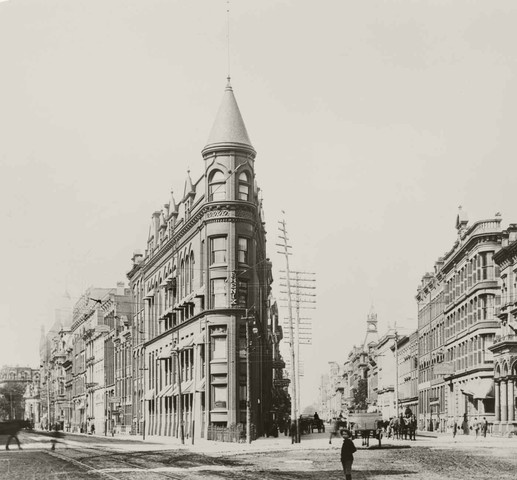Discover the Rich Background Behind the Gooderham Structure in Toronto
The Gooderham Building, an excellent symptom of Richardsonian Romanesque style in Toronto, has a fabled past that extends beyond its striking red brick frontage. Commissioned by the prominent Gooderham and Worts distillery in 1891, this structure has actually played a pivotal role in shaping the city landscape of the St. Lawrence Market area.

Beginnings of the Gooderham Building
Creating a long-term tradition, the Gooderham Building, additionally called the Flatiron Structure, emerged as an icon of Toronto's architectural advancement in the late 19th century. The structure's origins map back to 1891 when it was commissioned by the Gooderham and Worts distillery, among copyright's largest distilling firms. Made by engineer David Roberts Jr. Gooderham Building address., the structure was distinctively positioned at the crossway of Front and Wellington Streets, benefiting from a triangular great deal developed by the merging of these highways
The building's construction used regional red block and terracotta, establishing a distinctive aesthetic that enhanced the blossoming cityscape. Initially intended to house the Gooderham and Worts offices, the structure represented the prosperity of the distillery, which had actually become a substantial factor to Toronto's economic climate. Especially, the conclusion of the Gooderham Building accompanied a duration of fast urbanization that characterized the era.
The establishment of this architectural treasure not just showcased cutting-edge design however additionally laid the foundation for future growths in Toronto. Today, it stands as a testimony to the city's abundant background and flexibility, remaining to draw in visitors and admirers from around the globe.
Architectural Value
The building significance of the Gooderham Building prolongs beyond its unique flatiron shape, showing the cutting-edge spirit of late 19th-century layout. Finished in 1892, the framework exhibits the Richardsonian Romanesque style, identified by its durable stonework, rounded arcs, and intricate detailing. The strong use contrasting materials, particularly the warm red brick and limestone accents, improves its visual appeal and shows the workmanship of the period.
The structure's three-story layout is notable for its unified percentages and elegant cornice, which contribute to its iconic shape versus the Toronto horizon. The narrow great deal on which it stands positioned special challenges, yet the engineers, in this instance, designed a structure that maximized the available space while keeping visual balance.
Additionally, the Gooderham Building is a testament to the versatility of architectural layout in metropolitan atmospheres. Its enduring existence among modern-day advancements highlights the value of preserving historic architecture as a way of recognizing a city's past. Today, it continues to be a cherished site, reflecting both the architectural patterns of its time and the evolving narrative of Toronto as a vibrant metropolitan facility.
Duty in Toronto's Advancement
Emerging as a vital player in Toronto's city landscape, the Gooderham Structure contributed dramatically to the city's development throughout the late 19th century. The structure was initially created to offer as a storage facility for the Gooderham and Worts distillery, which was one of the biggest distilleries in the British Realm.
As the city broadened, the Gooderham Structure ended up being a vital part of the St. Lawrence Market area, which was a center of profession and commerce. Its distinct building style and famous visibility drew interest, affecting the layout of succeeding buildings in the area. The structure's survival via numerous financial changes and metropolitan growths mirrors the strength and flexibility of Toronto's historical landscape. In significance, the Gooderham Building is not just a building landmark; it played a pivotal duty in forming Toronto's identity and economic growth during a transformative duration in its background.
Social Influence and Heritage
Gooderham Structure's unique architectural style and historic value have actually left an indelible mark on Toronto's social landscape. As one of the city's most recognizable sites, its one-of-a-kind flatiron form and elaborate brickwork exemplify the Victorian building patterns of the late 19th century. This framework not just works as a visual support in the St. Lawrence community but additionally personifies the spirit of a burgeoning city throughout an age of economic development.
The building has come to be a symbol of Toronto's rich background, motivating local musicians and digital photographers who seek to record its appeal. Its existence has cultivated a feeling of neighborhood identification, adding to the narrative of city growth. Furthermore, the Gooderham Structure has played a crucial function in the tourism sector, bring in site visitors excited to discover its fabled past and architectural elegance.
In enhancement to its visual appeal, the structure envelops a narrative of durability and adjustment, as it has transitioned via various usages over the years - Gooderham Building address. Thus, the Gooderham Structure stands not just as a monument of building relevance but find out here likewise as a testimony to the developing social heritage of Toronto

Restoration and Conservation Initiatives
Many remediation and preservation initiatives have actually been taken on to make sure the Gooderham Structure remains an essential part of Toronto's architectural heritage. Initially finished in 1892, the structure has undergone significant restorations to deal with structural problems while preserving its historical integrity. One of the most noteworthy remediation occurred in the late 20th century when the structure was thoroughly refurbished to fulfill contemporary safety requirements without compromising its initial layout aspects.
These efforts included fixing the unique red-brick façade, recovering the famous triangular shape, and maintaining the elaborate stonework details. Furthermore, the building's interior has actually seen cautious updates that value its historical value, making sure that initial functions such as wood beams and ornamental moldings are maintained.
The Gooderham Building is currently safeguarded as a marked heritage property under the Ontario Heritage Act, which assists guard it from inappropriate modifications. Area interaction has actually played a vital duty in these preservation efforts, with neighborhood campaigning for groups increasing recognition about the building's historic relevance. Because of this, the Gooderham Structure stands not just as a functional space however also as a testament to Toronto's abundant building background and enduring social heritage.
Final Thought

Comments on “Gooderham Building Weather: Best Times to Visit This Famous Site.”